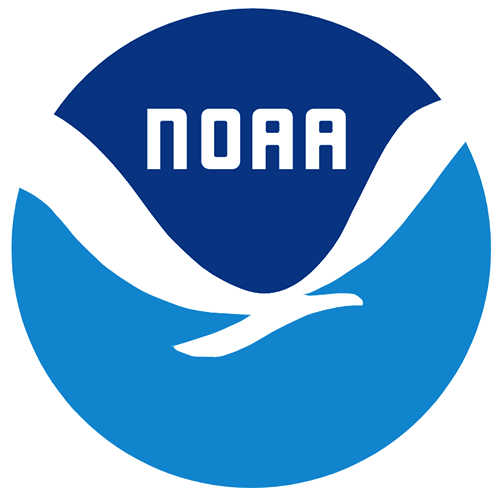2009 USGS Lidar: North Slope, Alaska
Welcome Guest ( Sign In )
NOAA
 This metadata record describes the unclassified, last return, point cloud data for the 2009 USGS North Slope of Alaska lidar project. This record was created by the NOAA Office for Coastal Management (OCM) because no metadata record or data report were available for the data. Information to create this record was found here: https://topotools.cr.usgs.gov/posters/arctic_coast_alaska.pdf and from the tile metadata for AK_Coastal_2009_000001 at USGS EarthExplorer.
This 2009 data set is part of the USGS assessment of coastal change hazards, over 11,000 km2 of airborne lidar elevation data were collected along the Arctic coast of Alaska between 2009 and 2012. Data coverage includes the barrier islands and mainland coast between Icy Cape and the U.S.?Canadian border, from the shoreline to ~1.5 km inland. Data coverage extends further inland to around 3 km on the Barrow Peninsula and along the coast of the Teshekpuk Lake Special Area (TLSA) where coastal erosion rates are among the highest in the world (> 18 m/yr). Nominal point density is 1.5 m and vertical accuracy is better than 30 cm. Data were not collected over most river deltas or large embayments, with the exception of Admiralty Bay, Smith Bay (Ikpikpik Delta), Kogru River, and the Fish Creek portion of Colville River Delta. The primary use of the lidar data is to establish a modern shoreline position to be used for change analyses with historical shoreline positions. However, the lidar DEM provides a wealth of topographic and intensity data that can be used for morphological mapping of the remote arctic coast.
This is one of the first comprehensive lidar datasets collected in a continuous permafrost environment. Many periglacial landscape features, such as patterned ground, ice-wedge polygons, and thermokarst lakes and former lake basins (recent and relict) are discernible in the dataset. Traditional coastal landscape features including shoreline position, beach width, slope, and bluff height and morphology are also distinct.
Acquired by Aerometric, Alaska; Funded by USGS National Geospatial Program, Coastal and Marine Geology Program, Alaska Science Center; U.S. Fish and Wildlife Service, Arctic Landscape Conservation Cooperative; U.S. Bureau of Land Management
The NOAA Office for Coastal Management (OCM) downloaded this lidar data from the AK DGGS site (https://elevation.alaska.gov/) and processed the data to be available on the Digital Coast Data Access Viewer (DAV). (There were 33 files from the AK DGGS UTM Zone 7 folder that were not processed. These files were pilot tiles and were referenced to WGS84. These pilot tiles are available from the DAV as a separate mission).
This data set is an LAZ (compressed LAS) format file containing LIDAR point cloud data.
This metadata record describes the unclassified, last return, point cloud data for the 2009 USGS North Slope of Alaska lidar project. This record was created by the NOAA Office for Coastal Management (OCM) because no metadata record or data report were available for the data. Information to create this record was found here: https://topotools.cr.usgs.gov/posters/arctic_coast_alaska.pdf and from the tile metadata for AK_Coastal_2009_000001 at USGS EarthExplorer.
This 2009 data set is part of the USGS assessment of coastal change hazards, over 11,000 km2 of airborne lidar elevation data were collected along the Arctic coast of Alaska between 2009 and 2012. Data coverage includes the barrier islands and mainland coast between Icy Cape and the U.S.?Canadian border, from the shoreline to ~1.5 km inland. Data coverage extends further inland to around 3 km on the Barrow Peninsula and along the coast of the Teshekpuk Lake Special Area (TLSA) where coastal erosion rates are among the highest in the world (> 18 m/yr). Nominal point density is 1.5 m and vertical accuracy is better than 30 cm. Data were not collected over most river deltas or large embayments, with the exception of Admiralty Bay, Smith Bay (Ikpikpik Delta), Kogru River, and the Fish Creek portion of Colville River Delta. The primary use of the lidar data is to establish a modern shoreline position to be used for change analyses with historical shoreline positions. However, the lidar DEM provides a wealth of topographic and intensity data that can be used for morphological mapping of the remote arctic coast.
This is one of the first comprehensive lidar datasets collected in a continuous permafrost environment. Many periglacial landscape features, such as patterned ground, ice-wedge polygons, and thermokarst lakes and former lake basins (recent and relict) are discernible in the dataset. Traditional coastal landscape features including shoreline position, beach width, slope, and bluff height and morphology are also distinct.
Acquired by Aerometric, Alaska; Funded by USGS National Geospatial Program, Coastal and Marine Geology Program, Alaska Science Center; U.S. Fish and Wildlife Service, Arctic Landscape Conservation Cooperative; U.S. Bureau of Land Management
The NOAA Office for Coastal Management (OCM) downloaded this lidar data from the AK DGGS site (https://elevation.alaska.gov/) and processed the data to be available on the Digital Coast Data Access Viewer (DAV). (There were 33 files from the AK DGGS UTM Zone 7 folder that were not processed. These files were pilot tiles and were referenced to WGS84. These pilot tiles are available from the DAV as a separate mission).
This data set is an LAZ (compressed LAS) format file containing LIDAR point cloud data.
